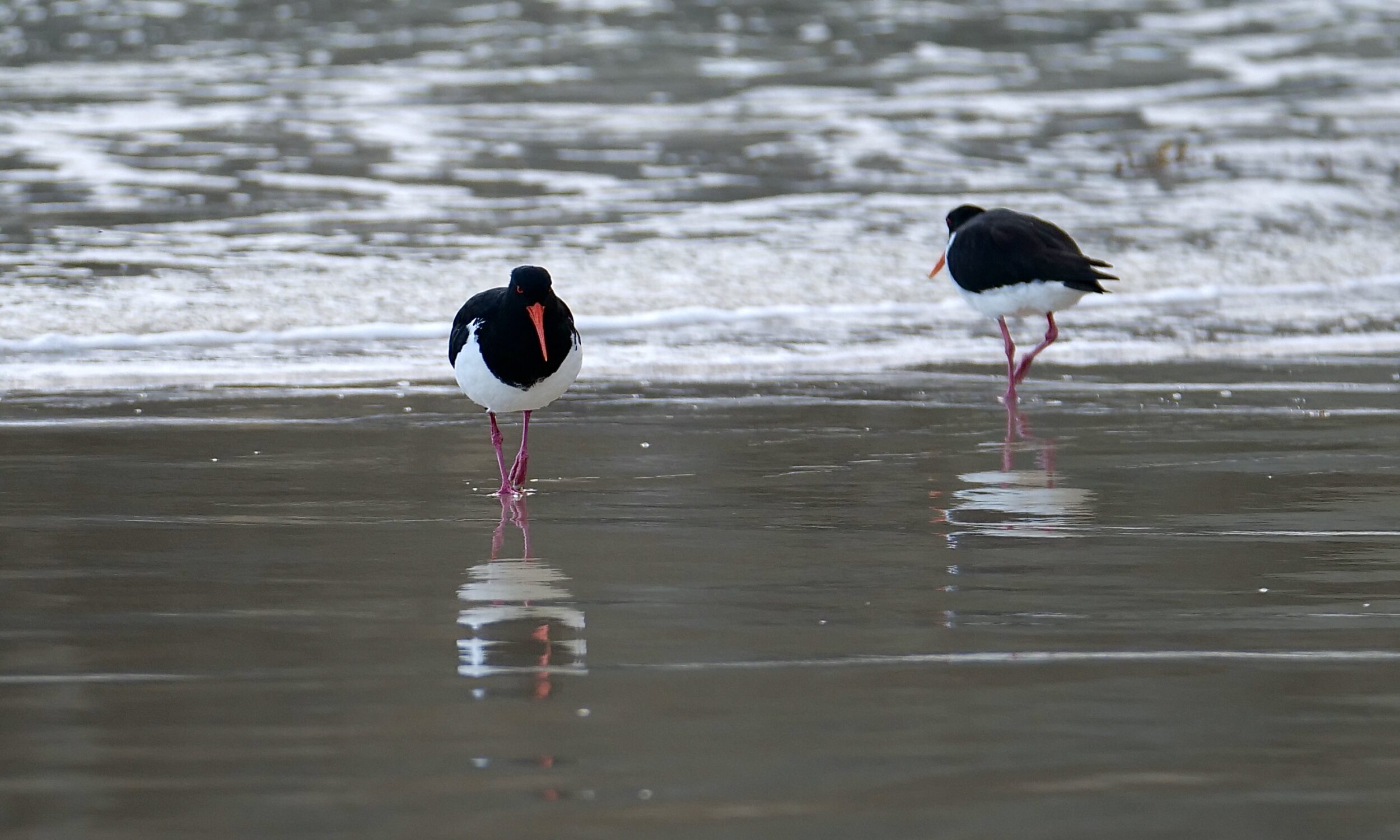This and the next several chapters in this series all feature wet sand.
Today’s post also has oystercatchers, in “reflective” mode.
Both of the relevant strands are on the northern edge of the Southern Ocean, according to most Australians.
According to many non-Australians, the Australian continent’s southern edge is really on the Pacific Ocean, and all of Australia is well north of the Southern Ocean!
Some argue that there is really no such thing as a “Southern Ocean” – that its waters are merely the southernmost parts of the Atlantic, Indian and Pacific Oceans.
Our species has never reached universal agreement on where lines should be drawn in the sand…or the rock…or any other subset of terra firma.
It is surely delusional to expect that Homo sapiens will ever reach global acceptance of lines drawn in water!
Click here to learn more about oceans’ borders.
Regardless, this post’s oystercatchers are members of the two species that wade on Australian shores, only.
There are, however, not-so-hugely-different oystercatcher species on many sandy and rocky shorelines, worldwide.
All “work” the intertidal zone, where they prey on many different critters – shelled, soft and scaled.
Most oystercatchers never – or rarely – eat an oyster.
The featured image shows the more numerous and very widespread Australian species.
Click here to learn more about the pied oystercatcher, Haematopus longirostris.
At 5.05 pm on 17 September 2021, the pictured pair were patrolling Culham Beach, just west of Hopetoun, on Western Australia’s south coast.
There was no line in the sand, but they were just inside Fitzgerald River National Park’s eastern boundary. (“The Fitz”, as some locals call it, is one of my favourite places on “our” planet. My beloved and I are far from unique in this regard)
I took the other photo on “The Prom”, in October 2018.
The tip of Wilsons Promontory, in Victoria, is the Australian mainland’s southernmost point.
“The Prom” is another of Australia’s most superb coastal places.
It sees enormously more human visitors than does “The Fitz”.
Location, location, location: we are delighted that “The Fitz” is more than 500 kilometres distant from Perth, rather than “conveniently close” to Melbourne.
Click this for information about the sooty oystercatcher, Haematopus fuliginosus.

Footnote
In my experience, pied oystercatchers have proved a little less wary than is usually alleged.
My encounters with them have always been on sandy shorelines.
Allegedly, sooty oystercatchers prefer rocky shores.
I have also, often, seen them on sandy beaches, where they looked equally “relaxed and comfortable”.
